


















































• Want ultimate flexibility?
• The option to return the truck at the end of the agreement, if you wish?
• Or the option at maturity to purchase at a cost fixed at day one – even if its market value turns out to be much higher at maturity?
• Want to claim capital allowances to ensure it’s a tax efficient deal for your business?
• Want to defer paying the VAT for up to three months?
• Want to pay a large deposit to reduce monthly rentals?
• Want to pay no deposit to free up cash to use elsewhere in the business?
Sounds too good to be true? Well, all this is possible with Contract Purchase, which could be the ideal solution for your fleet replacement plans. Your local PACCAR Financial Regional Manager is waiting to provide a bespoke quotation to meet your requirements.






salessupportuk@paccar.com







WELCOME TO ISSUE 34 OF DAF DRIVER MAGAZINE!
While the award-winning DAF XG+ flagship models have been catching the industry’s attention over the last few years, the perhaps not-so-humble XD distribution range is enjoying its moment in the sun in this issue.
Publisher - Matthew Eisenegger











avid Bratt & Sons has put two XD 340 6x2s into service on steel haulage out of Kidderminster and the operator highlights the improved cab comfort offered by the XD over its predecessors and competitors.
A transport company is only as good as its drivers, and if you want good drivers, you are going to need good trucks. And that’s something that DAF has always strived to provide to its customers.
Going back in time, the truck that really made DAF’s mark in the UK was the famous 2800 ATi. Introduced at a time when British hauliers were looking to Europe and beyond for new business opportunities, the full-width cab on the big DAF was noted for providing space and comfort for drivers who might be away from home for weeks at a time.
But what was under the cab was even more significant. The 2800 ATi was notable for employing intercooling on its turbocharged engine: the first European truck engine to do so. Over the coming decades, intercooling was to prove to be the key to unlocking the diesel engine’s maximum potential: both in terms of power output and reduced emissions. All the other truck engine manufacturers realised they
had to follow suit or go out of business, but it was DAF that got there first.
DAF Driver magazine has now tracked down what must be one of the cleanest and most faithfully restored examples of this landmark truck. Although restored in the UK it’s destined to spend most of its new life in Ireland, so our feature might be your best chance to get a good look at it.
Looking forward, we visit one of the early adopters of DAF’s 19-tonne LF Electric and find out just how difficult it has been making the switch to battery power.
In fact, it’s been a remarkably easy process: delivery of the LF Electric followed a week with a demonstrator truck, and the process was just literally plug-in and play. However, the operator cautions, careful planning of routes and loads is essential for success. The big question now, is will the LF Electric be the same trendsetter that the 2800 ATi was?
We’ve also got a good look at the trucks on show at Truckfest Lincoln, another fine farm truck from New Zealand, and news of why a well-known operator is returning to DAF after a gap of over two decades.
Enjoy the issue!



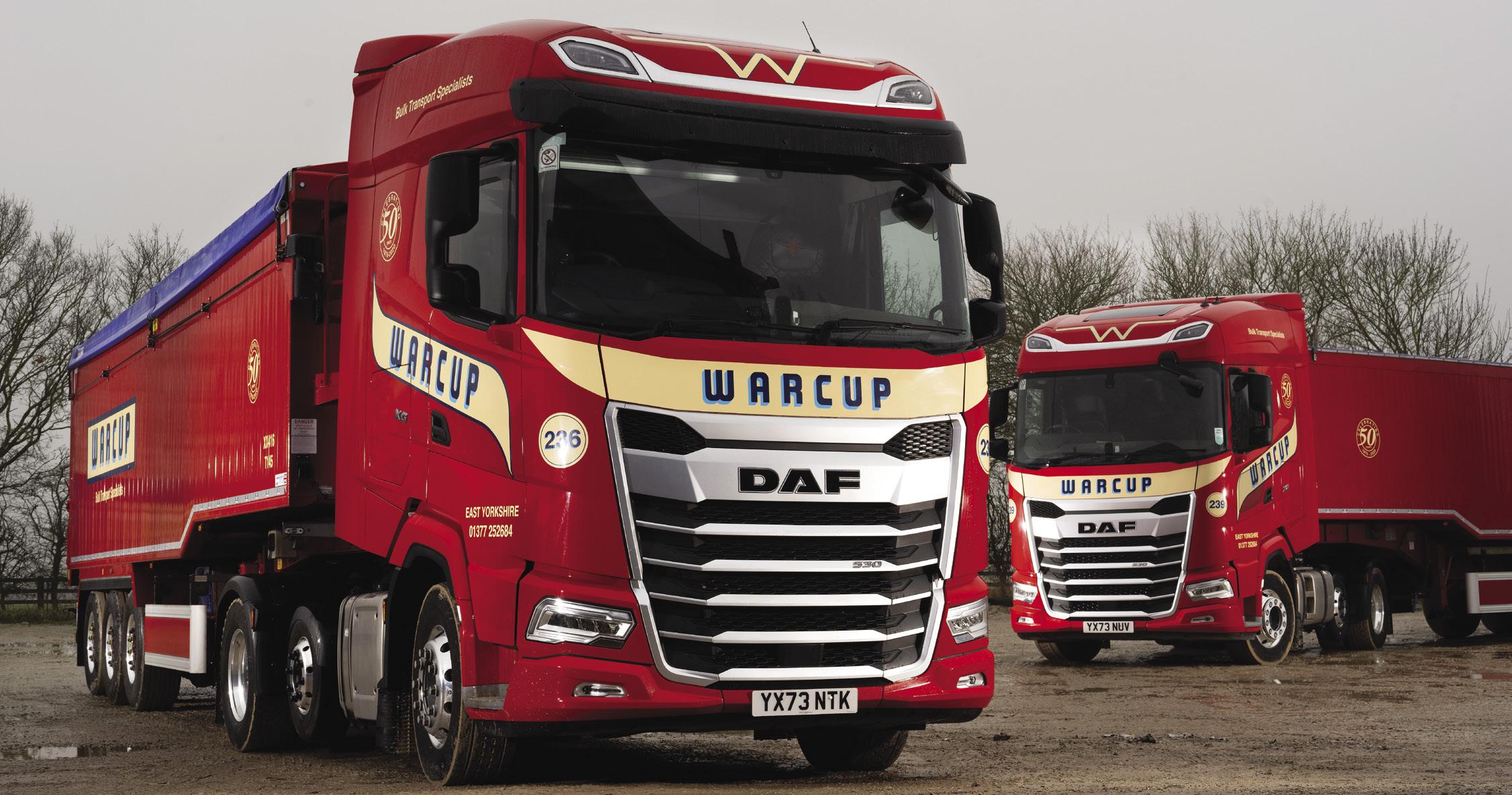
EDITORIAL
Publisher: Matthew Eisenegger
Managing Editor: Richard Simpson
Designer: Harold Francis Callahan
Editorial Address: Commercial Vehicle Media & Publishing Ltd, 4th Floor 19 Capesthorne Drive, Eaves Green, Chorley, Lancashire. PR7 3QQ Telephone: 01257 231521 Email: matthew@cvdriver.com
ADVERTISING
Advertising Sales: David Johns Telephone: 01388 517906 Mobile: 07590 547343 Email: sales@cvdriver.com
DESIGN
Art Editor: Harold Francis Callahan Telephone: 01257 231521 Email: design@cvdriver.com




CONTRIBUTORS
Mark Ballantyne
Pip Dunn
Andrew Geddes
Ronnie Hitchens
John Kendall
Karl Hopkinson
Mandy Wannerton
PUBLISHER
Commercial Vehicle Media & Publishing Ltd, 4th Floor, 19 Capesthorne Drive, Eaves Green, Chorley, Lancashire. PR7 3QQ Telephone: 01257 231521
The publisher makes every effort to ensure the magazine’s contents are correct. All material published in DAF Driver magazine is copyright and unauthorised reproduction is forbidden. The Editors and Publisher of this magazine give no warranties, guarantees or assurances and make no representations regarding any goods or services advertised in this edition.
DAF Driver magazine is published under a licence from Commercial Vehicle Media & Publishing Ltd. All rights in the licensed material belong to Matthew Eisenegger or Commercial Vehicle Media and Publishing Ltd and may not be reproduced whether in whole or in part, without their prior written consent. DAF Driver magazine is a registered trademark.

Companies across the transport industry are thinking seriously about the viability of a move to EVs, whether in part or a full fleet transition. We talked to someone whose company has added the first battery-electric truck to their fleet.








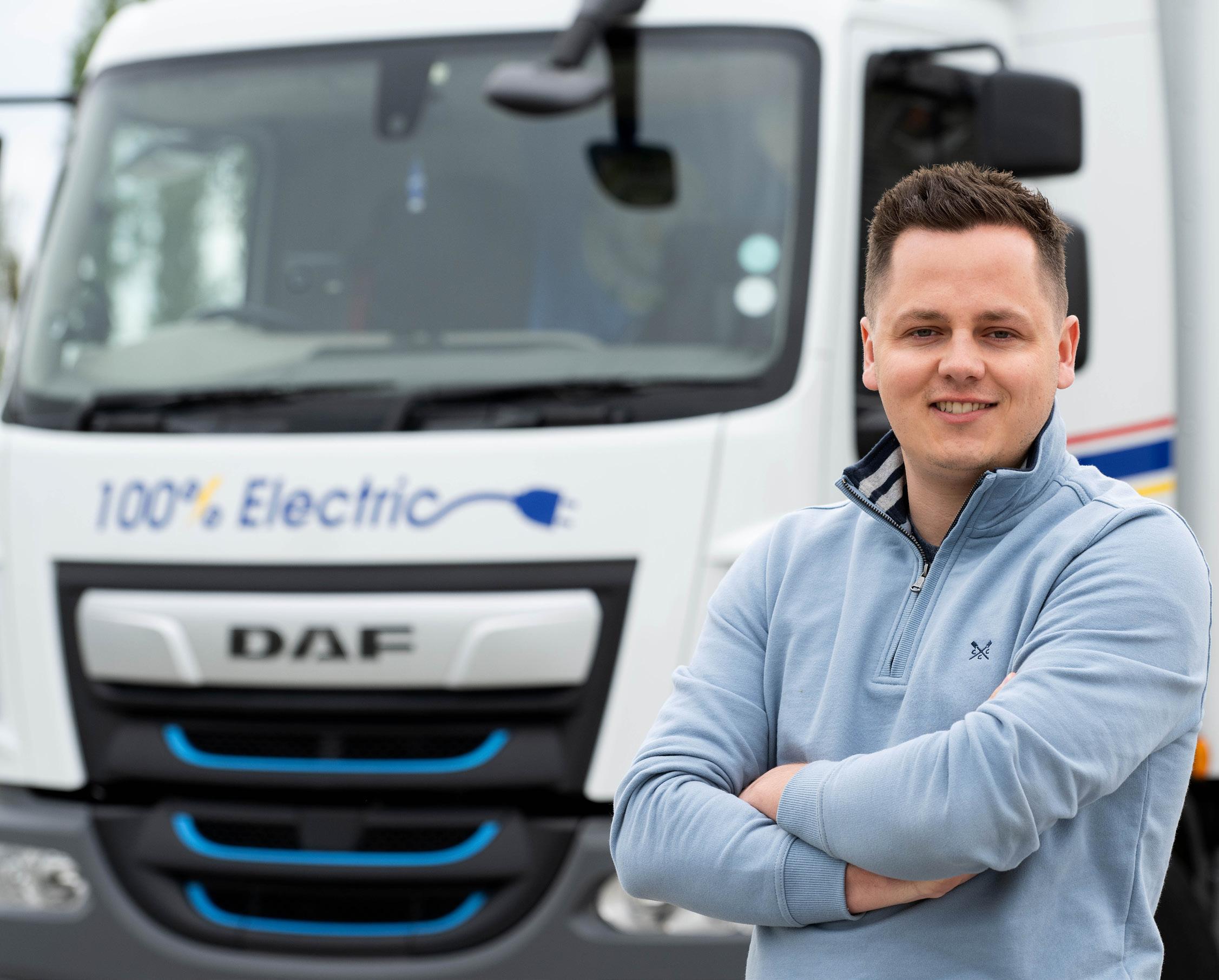
Harry Campey, Commercial Operations Director of Campeys of Selby, explains how the 19-tonne DAF LF Electric truck has performed after a year of real world operations.
How has it fitted into the bigger sustainability picture within a fairly-typical medium-sized haulage operation and how has Campeys navigated through the ‘green’ regulations and incentives for the transport sector?
Most importantly, has it all been worth it?
Share of responsibility
North Yorkshire-based Campeys of Selby runs a fleet of over 100 trucks.
In 2023, it took possession of its first battery-electric truck – a DAF LF Electric at 19.0-tonnes GVW. Harry Campey has been very open and very clear on the direct and indirect benefits of that decision, and why his company has absolutely no regrets.
The family business prides itself on a personal touch when it comes to clients and a commitment to ‘taking its share of responsibility for preserving the natural environment’. Harry Campey represents the family’s fourth generation in the business, and the simple question on why the company chose to acquire a battery EV so early was met with a very simple answer: “Sometimes you have to make a big decision,” he says, “the future of the planet depends on it”.
The DAF LF Electric was the first battery-electric vehicle in the Campeys fleet. “Prior to that we’d had a demonstrator vehicle for a week,” explains Harry. “The demonstrator did exactly what we needed it to do, its range was exactly as promised by DAF and it fitted nicely into the fleet on a dedicated job, where it replaced a diesel vehicle. So, we didn’t really need to do anything special when the new vehicle arrived. It took over that same run, so it was a straight like-for-like swap.”
Campeys saw purchasing their first EV as the next logical step on a journey they had already begun. “We’ve been running alternative fuel vehicles: CNG biomethane trucks; since 2021,” he



“Sometimesyouhavetomakea
bigdecision,”hesays,“thefuture oftheplanetdependsonit”





says, “We see battery electric as the future. So, we felt the best way to learn about and understand what that future entails, is to take the leap into the deep end. So that’s what we did, and we don’t regret it in any way.”
Asked what advice he would give other hauliers thinking of purchasing their first electric vehicle, Harry says good preparation is crucial for a smooth transition. “It’s important to identify appropriate work for the electric vehicle,” he says. Harry also felt the support from DAF definitely helped. “The advice from experts at DAF,” he adds, “was useful in preparing for using the demonstrator and when it

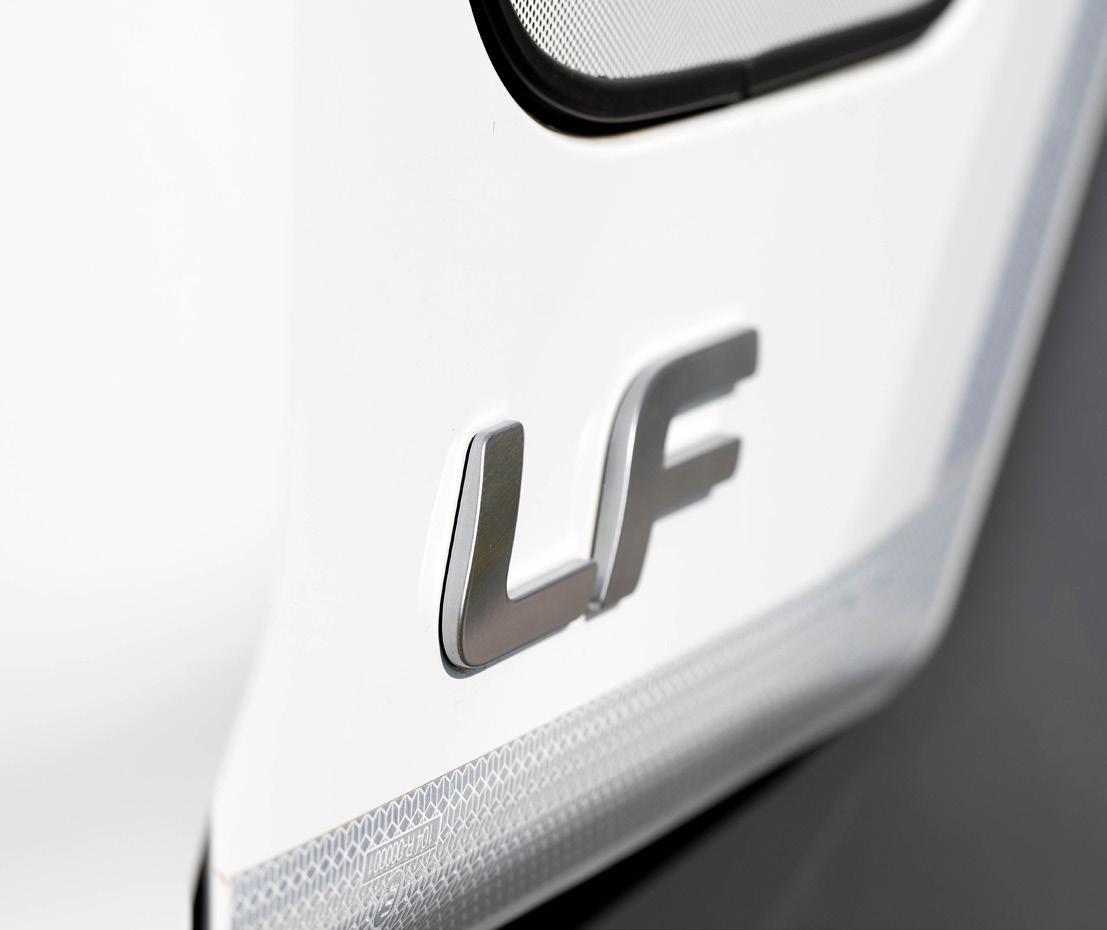
came to purchasing a vehicle.”
So, were there any teething problems at all?
“Not especially. The only fundamental difference with the DAF LF Electric from a diesel vehicle is plugging it in overnight,” he asserts, “and the only hiccup had been when a driver didn’t plug-in the charger properly by mistake! Other than that, the vehicle is doing exactly the work the previous diesel vehicle did and has been 100% reliable.”
Beyond good preparation, Harry feels it is vital to have an open-minded
attitude. “Right now, battery-electric certainly couldn’t replace all our fleet, as currently they couldn’t properly fulfil all our runs. But the chances are that most operators could identify a vehicle or a run that could be replaced with a battery-electric vehicle without too much inconvenience.”
Harry says companies also need to look at the bigger picture. “Look beyond the narrow, short-term costings to the commercial and other benefits having electric vehicles brings to the business. For example, from customers wanting to use the vehicles or valuing the fact electric vehicle operation sits alongside their own green credentials.”

An interesting proposition With tendering, too, Harry says it helps Campeys gain and retain business.
“Sustainability and ESG policies are such a high agenda item nowadays in the processes,” says Harry, “So, when you’ve got battery, or other alternatively-powered vehicles in your fleet, companies you’re tendering with are interested in those vehicles, asking questions about them. It straight away puts you at the forefront in the tender process because you’ve got something positive that not everyone has.”
Harry knows that eventually other companies will start catching up, but for now, he says, Campeys are benefitting from being a market leader. “Having a
battery-electric vehicle helps us be seen as an innovator, taking the first steps into the future. I believe the immediate future for the haulage business is battery-electric. So, the more we embrace it, the more we learn and keep on top of the technology, which, admittedly, is changing so fast. If we accept it and work with it, technology like battery-electric will keep us at the forefront and give us a commercial advantage over our competitors.”
Brilliant marketing tool
There are other ‘soft’, unmeasurable benefits. Harry says, “An electric truck is a brilliant marketing tool, and it starts off conversations with new and existing customers. It’s difficult
to quantify on how it is helping us to gain, save or retain levels of business, but we just know we’ve made the right decision.”
So, no regrets?
“Absolutely none. It’s been a strategic move for the business, but also one where we have been led by our heart. Climate change is very real, and we operate in an industry where we can make a real, positive difference. “Sometimes you have to make a big decision,” he says, “the future of the planet depends on it. We’ve got our second battery-electric truck from DAF, ordered to arrive later this year. I think that says everything.”














































































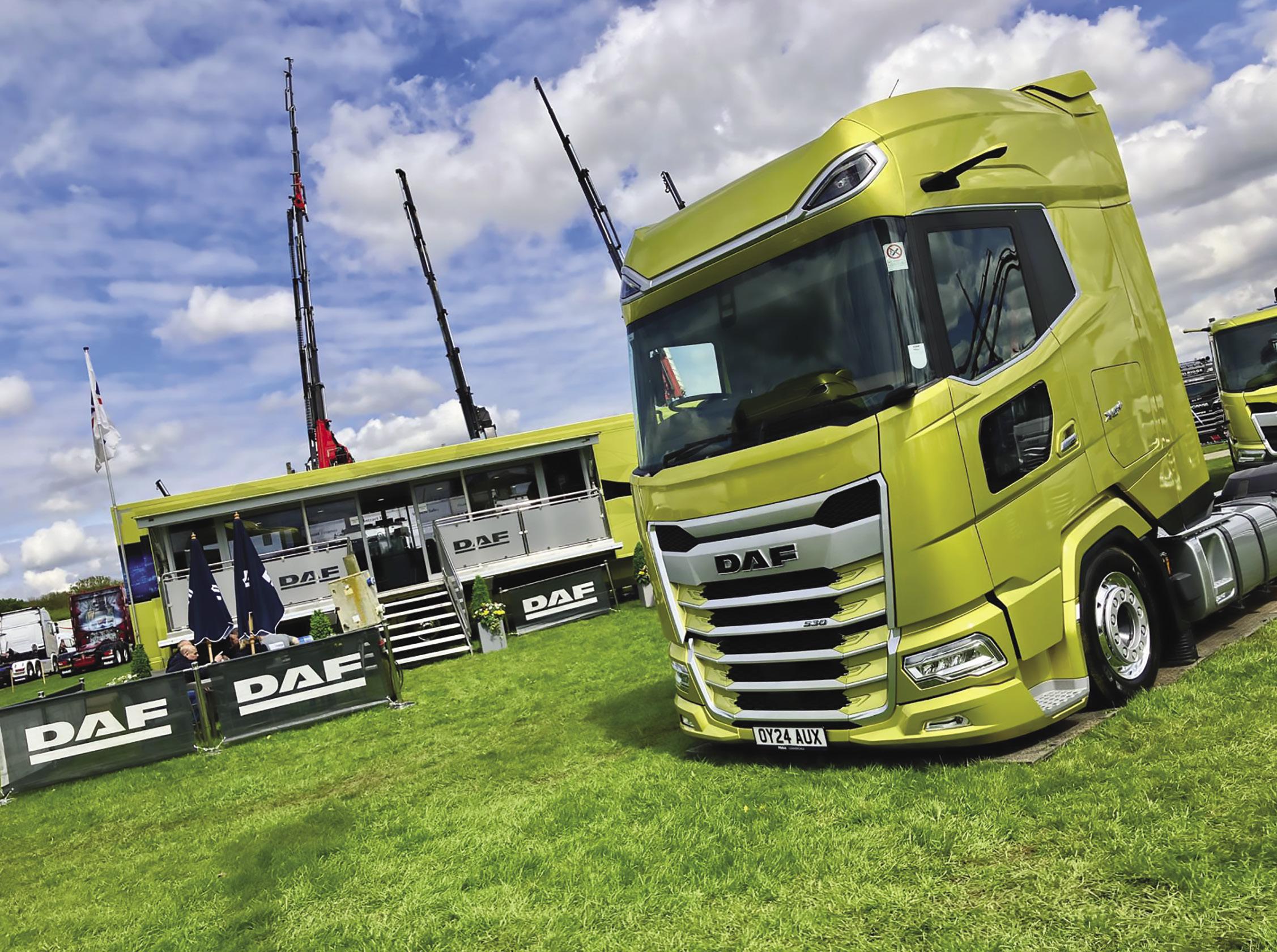
Words: Matt Eisenegger Photographs: DAF Driver Magazine
A new venue for 2024 saw Truckfest move from the event’s spiritual home at the East of England Showground on the outskirts of Peterborough up the road a few miles to the Lincolnshire Showground.
Wet weather on the run up to the show didn’t deter either the trucks or the visitors.
A few vehicles did look to be sitting very low on the soft ground, but it was certainly smiles all round.
There was a really good show of DAF products as well as associated brand from time gone by. The ‘all new’ XF, XG and XG+ took pride of place in many an operator’s line-up.
Armed with cameras, the DAF Driver magazine team took to the mud to catch the ‘Best of the all new fest’.
Enjoy!










































































































































































Words: John Kendall
Photographs:
David Bratt & Sons raise the game with two New Generation XD rigids.


Stephen

IDavid
In 1958 21-year-old David Bratt bought his first truck, founding the business that now trades as David Bratt & Sons. Initially, the company provided haulage services to civil engineers, builders, and quarry operators from Stockport in Greater Manchester. Over the years, David Bratt diversified the services the company could offer to include flatbed, curtainside, forklift and crane equipped vehicles. Warehousing was also added to provide a complete handling and distribution service throughout the UK.
Today, the David Bratt & Sons fleet
consists of around 70 trucks and 60 trailers, and following the death of its founder, is run by sons David and Stephen.
“We’ve been running DAFs for over 20 years, and ran Leyland trucks before the DAFs”, David Bratt junior recounts. “We have several other makes as well, but at the moment the DAFs are dominant on the fleet.”
Currently, the company operates some 44 DAFs from across the range. The latest in the company’s distinctive yellow and red livery are
two brand-new, New Generation DAF XDs, operating out of the company’s Kidderminster depot, carrying steel nationwide.
Both are 26-tonne GVW XD 340 FAR 6x2 rigids, fitted with Roco Truck Bodies 8.5m steel transporting bodywork with sliding canopies. “They are on a contract that we’ve had for quite a few years”, says David, “We had two CFs on ‘16’ plates and once the new model came out, we thought we would update them. We heard that the XD was better on fuel and the cab is quite a bit more modern”.


“We’vebeenrunningDAFsfor over20years,andranLeyland trucksbeforetheDAFs”
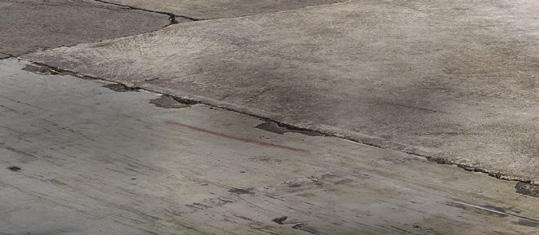


The previous trucks were both DAF CF 6x2s with similar bodywork. The two new vehicles went on the road on 1st March, so are still fresh out of the box. Their Roco bodywork includes anticondensation panels, recessed sockets for 100mm x 100mm galvanized posts, a pair of LED work lamps and two rear pull-out steps. The XD cab on both vehicles is a high-roof sleeper, giving the drivers comfortable sleeping space when needed.
PACCAR’s 340 bhp (251 kW) MX-11 powers the two trucks, and is equipped with the integrated MX engine brake
to help reduce service brake wear. A ZF TraXon 12-speed automated transmission, helps make driving as relaxed as possible.
By choosing the high-roof sleeper cab, David and Stephen have ensured that their drivers have little to complain about when it comes to comfort and safety. Specification includes a luxury seat for the driver and an Xtra-comfort pocket spring mattress and topper for the bunk. There’s a fridge to keep food and drink cool and a storage drawer as well as a 6kW water-to-air auxiliary cab heater, with residual heat pump.
Other features include a DAF Infotainment system with a 10.1” touchscreen display and an 8” tablet for navigation, with access to DAFapproved third-party apps. There is also a wireless charging-pad for the drivers’ phones. Predictive cruise control makes driving the XDs a breeze, while helping to optimise fuel economy.
For added safety, David and Stephen have specified the XDs with DAF’s optional Kerb View Window, with folding cinema-style passenger seat to provide an uninterrupted view through


“I’vedrivenonemyselfjustoutand abouttotrythemoutandtheydo drivelikeacar,really”

the window for the driver. “A lot of rigids are going into tighter locations in towns and other places, so that’s why we ordered them with the extra window in the door”, David explains.
“The vehicles based at Kidderminster are predominantly carrying out steel deliveries. Our general haulage fleet, based in northwest England carries a wide range of products including steel, building supplies and construction equipment. We also operate specialist Hiab crane and Moffett fork truckequipped vehicles.”
The David Bratt & Sons XDs won’t be having an easy life. Each will cover some 2,500kms to 3,000kms per week, notching up around 150,000kms a year.
“The drivers are very impressed by the new XDs,” David says. “I’ve driven one myself just out and about to try them out and they do drive like a car, really. The drivers love them and they do look good and they’ve got good low entry for multi-drop work.
“We’ve also had some of the New Generation DAF tractor units and the drivers like those. They’re DAF XG models and the drivers are finding them good on fuel.”
All the David Bratt & Sons DAFs are supplied through DAF dealer Motus at Trafford Park near Manchester.
The DAF XD followed in the footsteps of the other DAF New Generation models when it won the 2023 International Truck of the Year award. The award was made at the 2022 IAA Hanover Truck Show where the XD made its public debut.
David Bratt & Sons has expanded steadily over the years and now offers a range of services. This includes haulage training services. The company offers Driver CPC periodic training courses and carries JAUPT approval. FORS Professional Driver CPC courses are also available. Besides these, the company backs up its crane and forklift equipped vehicles with Lorry Loader and Slinger/Signaller training, accredited by ALLMI.
Like many established haulage operators, David Bratt & Sons has its own warehousing, with sites at Stockport and Trafford Park. The company can also provide outside storage on a short- or long-term basis.



The company also strives to provide sustainable transport solutions. By monitoring fuel use and providing driver training in safe and efficient driving, David Bratt & Sons aims to minimise its environmental impact. The company has also invested in longer semi-trailers, while
it works with key customers to use HVO diesel fuel, where possible, to reduce its carbon emissions.
As David says, “The fuel consumption, the drivers and competitive pricing, they’re the three things that you’ve got to get, haven’t you?”




Words: Ronnie Hitchens Photographs: Karl Hopkinson
Clive Warcup, Managing Director at Driffield-based Warcup Transport is stepping back from the business. Or so he says! Ronnie Hitchens met the effervescent 77-year-old on a trip to the beautiful Yorkshire Wolds, and found a man with more vim and vigour than transport bosses half his age.








t was a rainy day in Garton-onthe-Wolds, a couple of miles outside Driffield, but that wasn’t going to dampen Clive’s enthusiasm for telling DAF Driver magazine about the bulk haulage operation – now with 26 trucks and chalking-up nearly 55-years in business. On our visit, Clive was flanked by his son Brian, 50, presently Operations Director, and who is ‘heir apparent’ to the thriving business. Warcup Transport is a family concern, with Brian’s wife, Christine, responsible for payroll and sales ledger, Clive’s wife, Diane, who is a director, and Clive’s daughter, Wendy, looking after purchase ledger and accounts.
DAF is starting to enjoy a resurgence in the Warcup fleet, after a gap of some 23 years. “The DAF product was great, but we experienced some issues with dealer support and we decided to try the Scandinavian marques,” Clive recalls.
A discerning bunch
Today, Scania makes up the majority of the fleet, and all are maximum weight 6x2 tractors, with lightweight mid-lifting axles. But 2021 saw the beginnings of the return of DAF with the first of four used XFs, and these have recently been joined by four New Generation DAF XG 530s, and two new XF 530s.
“The new cabs are leading the market,” says Clive, “and DAF really stole a march with new EU regulations on cab size and shape. Our drivers have really taken to them – lots more room and more creature comforts and so pleasing our exScania drivers. And bear in mind, they’re a discerning bunch! The New Generation DAFs really look the part, and they’ve a great image for our company.”
DAF Driver has heard encouraging reports of markedly improved fuel economy from hauliers with the new
XG product, especially those opting for the top-rated 12.9-litre, 530hp power-plant. “We run on all sorts of terrain,” says Clive, “and with all sorts of trailers too, which means with such a mixed bag, it’s really difficult to get any sort of benchmark figure on fuel. Taking everything into account, the DAFs are proving as economical as anything else on the fleet. Regardless, I know our drivers are getting the best out of them.”
Speaking of drivers, DAF Driver is always curious to understand the make-up of hauliers’ driver cohorts. Unsurprisingly, and typical of the industry, Warcup drivers are predominantly male, although more women have seen employment at the company recently. Driver retention is generally good, but the recent pandemic obviously presented some stern challenges. Happily, numbers today are stable. Bucking the trend, however, is the age demographic which is, encouragingly, well below

the national average of 51. At the other end of the age range is longserving driver, Keith, who, at the time of writing, is hanging up his driving boots for the last time after 27-years of service with Warcup at the age of 67.
For the love of Peter Importantly, and on the back of good experience with the aforementioned used DAF XFs, the company has become reacquainted with DAF’s renowned reputation for aftersales support.
“I saw a used DAF in Commercial Motor,” says Clive, “but Phil Moon, who I know, the marketing manager at DAF Trucks in Haddenham, suggested the spec wasn’t quite right and pointed me in the direction of what was then Solway DAF. It was then that I met Peter Fullelove. He was, and still is, an absolutely first-class human being. That was three-and-a-half years ago and I bought two pre-owned, modelyear ’17 DAF XFs there and then.”
He adds, “In truth, we were ‘testing’ the DAF customer experience again and, with Solway DAF, they passed with flying colours. We’ve since bought the New Generation DAFs from Motus Commercials in Hull, and we’ve seen a tremendous improvement in dealer support, on top of the impressive advancements with the latest trucks.”
Son Brian, who accompanied his father to see Peter Fullelove, points out, “It was like being treated like their most important customer. Simply being kind and courteous goes a long, long way. I remember going to see truck dealers with my dad when I was a kid, and they made a fuss of me while he was doing the deal. They seemed like friends of the family. It was that traditional customer-dealer relationship where personal, family bonds were formed and were integral to an ongoing business partnership.”
Clive adds, “It really worked back then, and it’s been central to Solway
DAF’s success ever since. I understand Peter has retired, but I suspect he’ll be retained in some capacity. He’s a DAFman through-and-through – you can’t change what’s in your blood.”
It should be added that though Clive is stepping back (as a rule he works mornings only), he still buys the trucks!
While Clive has some big shoes to fill, Brian certainly has all the credentials to head-up the business and to drive it forward, too. Leaving school with A-levels, he completed a Transport & Distribution degree with first class Honours at Huddersfield University. While Uni provided the theory, Brian was also well-versed with the practical side of things having grown-up surrounded by trucks. It meant he benefitted from a true, all-round transport education. “I did my final exams on the Friday,” Brian remembers, “and then I started work properly the following Monday.”



Clive’s route to transport, on the other hand, was a little more oldschool having gone straight ‘onto the spanners’ as a truck fitter as soon as he left school. Later, in 1970, and at the tender age of 23, he bought a second-hand Leyland Lynx with a fixed head engine. “I simply worked and worked and worked,” says Clive, “and very gradually built it up. It was all aggregate work in the beginning, then Diane and I got married and we moved to Garton-on-the-Wolds right in the middle of prime arable farming country, and this opened up new



opportunities for my little transport business. We soon concentrated on agriculture, and we’ve developed the business on the back of it ever since.
TASCC force to be reckoned with With Warcup Transport‘s core business centred on agriculture, and more specifically the transport of food chain materials for human and animal consumption, operations are immersed in rules and regulations. And rightly so. What happens between field and fork really matters; corner-cutting or slack practices can
have serious health consequences. Independent checks and balances, therefore, are critical to ensure quality standards are consistently high and fastidiously maintained, by Warcup’s and by all hauliers in this sector.
Standardisation across the supply chain is governed by TASCC –the Trade Assurance Scheme for Combinable Crops, overseen and audited by the Agricultural Industries Confederation. It’s stringent, of course, and it necessitates buy-



in from hauliers, including drivers who require specific training. TASCC often refers to ‘food integrity’ and it’s something that Clive and Brian wholeheartedly support.
“TASCC really is central to the operation,” admits Clive, “fall foul of it, and we could find ourselves in serious dire straits. Because everything we do is bulk, whether it’s grain, animal feeds, breakfast cereals or flour, we have to provide traceability and demonstrate that our trailers have been cleaned out after each of its previous
“Itwaslikebeing treatedliketheirmost importantcustomer”
three loads. That’s down to our drivers, so they have a big responsibility.
“Return loads are often ruled-out,” he says, “because we can’t carry items such as glass – anything that could contaminate the food chain.
Food integrity is a big concern for us, and I’m satisfied on a personal level that this company is going above and beyond to ensure we adhere to the TASCC code-of-conduct.”
Solid proposition
DAF Driver visits operators regularly, and they’re all fascinating in their
own way. Yet it is the small-tomedium, family-run operations which hold particular appeal –and even more so when there’s a changing of the guard around the corner. And that’s if Clive can let go of the reins! Eventually, he will, of course, and we’re delighted to know that Brian Warcup will keep it in the family and, we have no doubt, keep the business moving forward while maintaining those traditional values that see the business as such a solid proposition for its customers.





Maintaining a history of owning and running its own trucks, New Zealand’s Brooker Farms went bold for its latest acquisition.


Back in the 1970s, many farms in New Zealand ran their own trucks: mainly older Internationals, D-Series Fords, Bedfords and Austins. In a country where the national fleet consisted of a mixture of American and British marques, such trucks were pretty unremarkable against the flashy Macks and Kenworths then favoured by premium third-party hauliers. By today’s standards, they were small and modest, with no fancy paint jobs or flash accessories. They were simply there to do a job until such time they were parked up in the farm shed to be the target of starlings nesting in the rafters.
Times have moved on, and trucks are bigger and more complex, as are the farms and their associated agricultural equipment. Transport companies have taken up much of the haulage of farm products such as grain, seed, feed, and stock, freeing up farmers to do what they do best. Brooker Farms of Aylesbury near Canterbury (many of the place names in New Zealand will







be familiar to British readers, even if their relative locations are not!) has, however, stayed true to the tradition of owning its trucks, and its latest DAF CF 530 is a fine example of that.
Shane ‘Shaneo’ Brooker and his father, Andrew, are well established in Aylesbury, nestled between Rolleston and Kirwee, 30 minutes southwest of Christchurch. Andrew Brooker moved to their current property as a child with his family some 50 years ago from north Canterbury, while Shano runs a contracting business alongside the main farm enterprise. The family’s previous farming activity had been scattered over different plots, and the move south saw the family consolidate to a single large property, which it has continued to expand to its current size. Of its 600 hectares (1483 acres), 500 to 550 hectares are under arable crops. Livestock is no longer a significant part of the farm’s business, though some dairy cows and store lambs are kept. In earlier years, livestock transport was a major role for previous farm trucks.
So, what role does the Brooker’s farm truck undertake in the absence of livestock, and why would farmers invest in a truck of a very high specification that would look perfectly at home in a haulier’s yard? And why a new truck when there’s a proliferation of good used chassis-cabs more than suitable for the role?
Shane says purchasing new trucks has always been a Brooker preference, primarily for reliability and their warranties. And while many secondhand units available come with extensive maintenance histories, they also carry potential unknown costs with the inevitable high kilometres. Good second-hand trucks with dropside bodies are also much less common and often not set up to preferred specification.
Local transport companies offer a great service, but running its own truck gives the farm the ability to ‘go’ whenever needed and the flexibility to transport product as required. In peak harvest, this is important; having its

own drying sheds means a constant need to move grain about the farm. Relying on an outside contractor can potentially hinder the farm’s ability to harvest. Its own trucks makes the farm 100% self-sufficient.
When the DAF finally hit the road last year, it was several months later than the hoped for delivery date –unfortunately, that just seems to be how the post-covid world operates these days. This had left the farm without a truck and relying on outside contractors. Shane and Andrew crunched the numbers and realised the extra cost of third-party haulage would basically pay for their own truck in about two years.
In general haulage terms, the trucks don’t run up huge kilometres annually. But, says Shane, the DAF is out on the road most days doing normal duties, and depending on the time of year, it may run grain into Champion Flour Mill in Christchurch or truck farm-grown grass seed south to Ashburton for cleaning.
The farm produces up to 300 tonnes of this high-value crop annually, and peak season can see Shane or Andrew making two to three round trips a day, six days a week over a month.
Running to the West coast with straw for animal bedding in winter is a common duty, with trips further north around the Nelson region also included in the truck’s duties. A 12-month period generally puts about 50,000km on the clock. It’s usual for the Brookers to replace their trucks around the half-million km mark, or roughly every 10 years.
Shane rates the new DAF highly. He says it’s superior to the model it replaced. In particular, the automated TraXon 16-speed gearbox is more responsive and smoother. The cab is more comfortable and quieter as well as being more spacious than the predecessor DAF’s day cab. Increased torque (max torque 2600Nm at 1000 to 1400rpm) from the 12.9L Euro-VI MX-13 engine rated at 390kW (530hp) at 1675rpm has seen the truck pulling
a couple of gears higher on hilly trips to the West Coast and it’s quicker at heavier weights compared with the old truck. The permitted gross weight is 48 tonnes – with a tare of about 18 tonnes, it achieves a payload of about 30 tonnes.
The DAF generally hauls a four-axle TMC 9m dropsider split tipper, which it inherited from the old truck. The DAF’s bodywork is a Mills-Tui 7.4m and Shane is quick to praise the company’s product and workmanship. He says Dean Purvis from Mills-Tui was excellent to deal with during the planning and build process. All the extra details requested were accommodated without issue.
Given the truck is required to transport the farm’s Telehandler from paddock to paddock, deck strength was a consideration. Andrew says they didn’t want a deck looking second-hand after a few years and needing repairs. Clever use of material has resulted in a strong body that retains a reasonable tare weight. Under-deck external trip and

either!


“Shanesaysthey’rehappywiththe change,andthebluereally‘pops’”




hoist controls for truck and trailer make operations easier.
Andrew says when the time comes to replace the existing trailer, Mills-Tui will likely be the first choice, thanks to the quality of the truck deck and experience in dealing with the company.
Smart trucks are a Brooker Farms tradition. Traditionalists will be pleased that there’s a trusty D-series Ford on the fleet, which is still used on the
farm today. A slightly more glamorous Ford that once graced the fleet was a very tidy N-series used for livestock transport. The farm also ran a 5032 model and a 5036 twin turbo. These were followed by Fodens, a 4350 and 4450, and then an Alpha.
The retirement of the Foden marque resulted in the natural progression to DAF. Past Brooker truck liveries have featured a white base colour with tones of blue striping and smart signage.
The new DAF was instead ordered in the metallic blue which DAF painted its roadshow units when the current models were launched.
Shane says they’re happy with the change, and the blue really ‘pops’. Dad Andrew says he initially got a bit of stick about having such a flash farm truck but says it’s likely the last truck he’ll order and wanted to go out with a bit of a bang. The next truck, he says, will be Shane’s problem.







Words&Photographs: Pip Dunn


DAF’s 2800 heralded the Dutch manufacturer’s entry into the pan-European long-haul market when it was given its public debut at the IAA Show in 1973. It broke new ground for DAF in two significant ways: the tilt cab was 23 cm wider than that on its 2600 predecessor (which was by then 11 years old), and the 320 hp, 11.6 litre DAF engine featured turbo-intercooling: the first European truck engine so equipped. This innovative technology was subsequently adopted by every other truck manufacturer, and still plays a vital role in ensuring fuel efficiency and emissions compliance on every diesel truck engine to this day.
For the UK, the 2800 was the truck that cemented DAF’s position in Britain as a market leader. Many a haulage company was built on the back of these big DAFs.
The new F241 (241 cm wide) cab was an instant hit with operators and drivers alike. The new cab sat high
over the engine and gave the driver interior room they could not have imagined before as they swapped their ERF A series or Foden S39s for the new ‘interloper’. Its extra-wide windscreen required a third, ‘middle,’ wiper.
The sleeper-cab gave them a decent sized living room, and a comfortable bunk to get their rest. It gave them room to store their gear: there was even room for a second bunk if they were double-manning, or simply taking their kids, or partners with them.
Even the most loyal operator of British trucks would have found it hard not to at least admit the 2800 was an improvement over most home-market products. Whether they bought them or not would usually be down to cost, you paid a little more for these creature comforts in the 1970s and some bosses didn’t want to do that, which explains why you could still buy a Guy Big J 4T for many years after the 2800 appeared!
The 2800 didn’t have it all its own way. It had competition, mostly from elsewhere in Europe - especially Sweden and Germany, but it was one of the imported trucks that forced the British manufacturers to raise their game, which in fairness they did with the ERF B series, Bedford TM and Seddon Atkinson 400.
The 2800 saw many improvements along the way, and spawned the more powerful 3300 and 3600 variants in the following decade. In 1984, the Space Cab, high roof sleeper moved it up a notch in the aspiration stakes and DAF was the third manufacturer to offer a factory-fitted high-roof sleeper after Volvo and, surprisingly, Foden!
Drivers who cut their teeth on 2800s, are probably now in their 60s, and some will be in their 70s. And some operators will have set up their business on the back of one of these DAFs. Or perhaps it was their first new lorry as they went it alone or grew their business? Whatever the

connection, many hauliers have fond memories of the 2800.
Many drivers ‘tramped’ in them in the UK and across Europe, and some even further than that into North Africa and the Middle East. Indeed, in the UK, DAF offered a ‘Superliner’ luxury version for ultra long-hauls with interiors created by a caravan manufacturer.
As the 2800 set many hauliers onto the road of success, so there are a lot of fond memories of the big DAF. And that in turn has led to many of these operators now looking for a 2800 to restore in their company’s original colours.
The truth is, unlike Scania 111/141s, or 112/142s, or the Volvo F88 and then F10, the 2800 isn’t quite so common on the show scene. They are getting slightly more familiar as restorations come to a conclusion, but a good 2800 – or its 3300 and 3600 cousins – are, in the grand scheme of things, getting
pretty hard to find. And you might have to pay top dollar for one.
As long as a decade ago a Space Cab version, was advertised for sale at what seemed at the time a rather salty £47,500, with explicit instructions there would be ‘no negotiation on the price’ - take it or leave it. I don’t know what happened to that truck, but I’d lay money on it that it found a buyer, and the price was in the region of what was wanted.
Restoring trucks of 1970s and 80s vintage is a challenge as the available parts pool dwindles and the people looking to source such vehicles increases. If you want a good truck from that era, you will need a fat wallet and one that’s happy to be opened regularly!
You also need time and space to restore it, and lots of both – and you really need a shed to keep it dry and warm, and to keep you dry and warm while battling to strip it down then
rebuild it. You’ll also need access to several pairs of willing and able hands to help out as well. Truck restoration is a skill, an art, a passion these days. And the older the truck, the harder it can be.
More people, therefore, are realising that the best way to get the restored truck of their dreams is to pay someone to do the work. It might cost a bit extra (though possibly not in the long run), but the time taken to get the finished product will be months rather than years. And the chances are, it will be to a higher standard.
There are no hard and fast rules, but it’s commonplace to hear of restorations that have taken 10, 15, even 20 years to complete, depending on the condition of the vehicle at the start of the project, the supporting spare parts and the resources - money and manpower – to see it through. How often do you see ads for lorries that are 75, 80, 90 per cent restored, but are still being offered for sale?


“Iwashelpinghimfromtheageoften–painting,cutting,welding…whatever”

One example of a paid-for commercial vehicle restoration is this amazing DAF 2800 recently restored by Dave Lythgoe at his small workshop near Southport.
Without trying to reveal the plot outcome, it really is one of the best ever restored lorries I think I have ever seen. No expense has been spared, and nothing had been bodged; no corners cut, nothing done to it that isn’t perfect. And I mean perfect. Perfect with a capital P.
Dave, 56, has been in transport for most of his adult life, he was an owner-driver – he too had a DAF 3600, then a 3600 Space Cab before moving on to other marques. But as well as being a truck driver, he had an engineering background. His dad was a sheet metal worker and Dave says: “I was helping him from the age of ten – painting, cutting, welding… whatever.”
He says he “was never a big fan of school” and left “as soon as I could”, at age 16 back in 1984. He started an apprenticeship as a sheet metal worker himself, which he did for 18 months before he joined the army at 17, moved to Germany, got his Class 1 licence and left in 1990 to become an owner-driver.
Dave started restoring trucks 11 years ago when he bought an old Volvo F89, “as a hobby” And it was that which led to request for him to do some third-party work for others. He subsequently restored a Volvo F10 and then the ever-increasing demands to rack up more and more hours behind the wheel led him to pack up and try restorations as a full-time business. And he hasn’t looked back: so much so that two years ago he extended his workshop.
“I love doing this”, he says. While the 2800 project was in the final stages of completion, the next candidate: a Scammell Crusader was in the shed being worked on. Around the yard are cabs from other trucks – Scanias, Leylands, Volvos and others. And he’s even taken a colleague on: 32 year old Jack Hunter who has been with him for two years now.
There’s no price scale – customers pay for the work on an hourly rate, with the parts obviously on top of that. But there is never any timescale – each truck will be ready when it’s ready, because any of them can be a can of worms, you never know their true condition until you get stuck in and take them apart.
Sometimes Dave will do some work at the customers’ premises and sometimes the trucks are split so the cabs come to his yard and the chassis stay with the owner.








Dave can rebuild trucks that are for shows only or fully road legal, whatever the customer wants. “I get a lot of rotten cabs to restore,” he laughs “But I do all jobs, big and small, such as battery boxes, mudguards…you name it.”
One area he steers clear of is fibreglass cabs. “I mainly do steel cabs. I will take on most things, but not fibreglass. But lorries from the 1970s and 1980s interest me the most, so I do them the most! I don’t do the really old stuff, or indeed the more ‘modern’ stuff – such as a Scania 4 Series or a DAF XF95.”
Getting parts for these trucks is not easy. “so few parts are still available from the manufacturers, so we have to make most bits ourselves.”
They also have to, pardon the pun, ‘look the part’ – no bodge jobs, it has to be an exact replica of a bracket or a panel. “I also have a container and lots of racking full of spare parts, and I scour the internet – I’m always on eBay! I will sell spares to help others out if I can as well.”
So what about the DAF?
Its restoration had been started by another party, but the work was not to a good standard “I had to drill the rivets out of the chassis so it would come apart. I found it had been pool welded which needed to be drilled out, which was a massive job.”
Things like this slow a project down, and Dave has to keep the customer informed at every step of the process.
“I had this DAF for a few years.” It’s a full ‘nut and bolt’ restoration, right down to the livery. It’s for a customer in Ireland.
It started life in the UK, and was registered in 1986 as C339 TCF - Dave has the original registration plate in the shed, but the customer is Aiden McCormick who now lives in New York! But his father’s company was based in Keenagh in Co. Longford. “His dad had a transport firm, he started with a Bedford TK, but then moved onto a 2800.
“He bought his 2800 14 years ago and took it to Ireland, he found a classic car magazine with an advert for a restorer and arranged for them to do the work. He spent £25,000 on it and it was a real ‘bodge job’. They sandblasted the chassis but that blew holes in the thinner sections, such as shocker sleeves and mudguard brackets and without repairing it, they just repainted over it, in the wrong colour, and wrecked it.


“IhadthisDAFforafewyears. It’safull‘nutandbolt’restoration, rightdowntothelivery”


“They put the wrong seats in it – with a grey fabric. There were countless other issues and things done wrong,” Dave recalls.
Then there was the so-called attention to detail, that just wasn’t there – “the mirror arms were the wrong sort, and too wide, not to mention they were knackered! It had a ‘homemade’ bumper. It looked like a yard shunter,” says Dave, “it was that bad.”
Aiden collected the ‘finished’ truck and took it to Ireland, but never showed it. “He rang me from New York, I rejected the call twice as I didn’t recognise the number, let alone one from America!
“But I finally took the third call and we spoke. He was thinking of getting a ‘new’ 2800, but rang me first. I flew to Dublin to meet him and we did a deal. His brother dropped it off to me about four years agio – at my old site.
“It’s taken me and Jack about 18 months to finish it, and the results speak for themselves.”
Dave shows me some grainy prints of Aiden’s father’s original DAF truck, and he’s done a superb restoration to recreate the original, right down to the period Irish registration – ZV 47763.
“We did subcontract some work, but we undertook the blasting, painting, fabrications, mechanics and some of the trimmings [on the fabric]. But we don’t do seats! We subbed out the manufacture of the aluminium catwalk. We put a new clutch in, but the gearbox was fine. The heavier fabrications were done by a friend, Simon Swarbrick of Keighleys of Longton. But we did as much as we could here, it’s easier to control that way, both the cost and the workload.”
There’s one thing not 100% accurate for this model… Says Dave: “the seats are out of a Space Cab – the seat backs
are higher, but they were the only half decent seats I could find.”
I dare some rivet counter to tell him ‘I think you’ll find’…. about the seats! We take the 2800 out of the shed, and for a ‘Euro 0’ truck on its original engine, it’s remarkably clean on fire up. The sun comes out to aid photography and I take a moment just to stand in awe at the amazing job Dave has done. And the cost? Well, that’s not for me to say, but given it is an A1 show piece that is already getting much-deserved praise on every social media platform I’ve seen it on, suggest it’s money well spent. All in it has cost about £80,000 to bring this lovely truck back to life.
It made its show debut at Truckfest and then was collected and shown in Waterford. It was subsequently displayed at a show in Belfast, and is now homed in Langford. It should be returning to the UK to visit the Retro Truck Show on September 7/8.
If you get the chance to see it, grab it; you won’t be disappointed.

The quality of a truck depends on the quality of the organisation behind it, which is why the DAF dealer network offers a unique advantage with the best geographical coverage of the UK, the most heavy truck experience and the longest opening hours of any truck franchise.
Area Dealer name Postcode Telephone
ABERDEEN Norscot Truck & Van Ltd ★▲ EV AB23 8JZ 01224 824444
ASHFORD Channel Commercials PLC ★▲ EV TN23 1EH 01233 629272
AVONMOUTH MOTUS Commercials ▲◆ EV BS11 0YL 01173 042800
CARDIFF Watts Truck & Van Cardiff ★ EV CF11 8AT 02920 308595 CARLISLE MOTUS Commercials ★ EV CA3 0HD 01228 539394
CROYDON HTC Croydon ★ CR0 4TD 0208 683 6200 DERBY MOTUS Commercials ▲ EV DE22 4NB 01332 824371 EDINBURGH Lothian DAF ★▲ EV EH20 9QH 0131 440 4100 GLASGOW MOTUS Commercials EV G51 4TH 0141 425 1530
GRAYS Harris DAF ★▲◆
RM20 4AU 01708 864426 GUILDFORD HTC Guildford EV GU1 1RR 01483 594900
MOTUS Commercials ★▲ EV B63 2RL 01384 424500 HEATHROW HTC Heathrow ▲ EV SL3 0ED 01753 681818
HUDDERSFIELD MOTUS Commercials ▲ HD2 1UR 01484 300500
HULL MOTUS Commercials ▲ EV HU9 5PJ 01482 795111
IPSWICH Chassis-Cab Ltd ★ EV IP6 0RL 01473 833003
LEEDS Ford & Slater DAF ▲◆ EV LS28 6SD 01132 571701 LEICESTER Ford & Slater DAF ★ EV LE3 2JG 01162 632900 LIVERPOOL North West Trucks ▲ EV L36 6AJ 0151
BT36 4PT 02890 342001
Lancashire DAF ★▲ EV PR5 8BW 01772 338111 READING HTC Reading ★ EV RG7 4AG 01189 300900 SHEFFIELD Ford & Slater DAF ▲ EV S13 9NR 0114 293 9200 SHREWSBURY Greenhous DAF ▲
ST6 2DE 01782 276600
Dealer name Postcode Telephone
Lynch Truck Services Ltd BB5 5YT 01282 773377
MOTUS Commercials ▲ KA8 9RT 01292 269002
GB DAF Banbury OX16 4SP 01295 270072
MOTUS Commercials ▲ EV S71 3HS 01226 731870 BASINGSTOKE Adams Morey Ltd RG24 8FB 01256 811414 BATHGATE Lothian DAF EV EH48 2EY 01506 813 743
BEDFORD Brian Currie (Milton Keynes) Ltd MK41 9TG 01234 211241 BELLSHILL
Commercials B33 0SL 0121 784 4023
BIRTLEY Ford & Slater DAF DH3 2SP 0191 406 8888
BLACKWELL H W Martin (Plant) Ltd DE55 5JY 01773 813313
BOURNEMOUTH Adams Morey Ltd ★ BH8 0BL 01202 524422
BURTON ON TRENT MOTUS Commercials ◗ DE13 7AB 01283 248899
BURY ST EDMUNDS Chassis-Cab Ltd EV IP32 6NL 01284 768570
CAMBORNE Adams Morey ◗ TR14 0PY 01209 721989
CAMBRIDGE Chassis-Cab Ltd ▲ PE28 9QR 0333 323 4040
CANTERBURY Channel Commercials PLC CT3 3DW 01304 841111
CARNFORTH Lakeland Trucks Ltd LA5 9DW 01524 734544
CASTLEFORD Pelican DAF ▲◆ WF10 5UB 01924 227722
CHESTERFIELD Ford & Slater DAF ▲ S40 2RG 01246 234213
CONWY Parrys Commercials Ltd LL28 5RA 01492 580303
CORBY Ford & Slater DAF ▲ NN17 4BA 01536 207980
COVENTRY Ford & Slater DAF ▲ CV3 4FL 02476 302856
CRAWLEY GB DAF Gatwick RH10 9NS 01293 537520
CRICK GB DAF DIRFT NN6 7BZ 01788 711699
CUMBERNAULD MOTUS Commercials ★ G67 3EH 0123 672 7771
DAVENTRY Brian Currie (Milton Keynes) Ltd ◗ NN11 8RF 01327 871770
DEESIDE MOTUS Commercials CH5 2QJ 01244 520853
DONCASTER MOTUS Commercials ▲ DN6 7BA 01302 727040
DONCASTER Fishlake Commercials Ltd ▲◆ DN8 4JD 01405 740086
DUMFRIES MOTUS Commercials DG2 0JE 01387 720820
DUNDEE Norscot Truck & Van Ltd ▲ DD2 4UH 01382 611166
DUNS J E Douglas and Sons ▲ TD11 3HS 01361 883411
DUNSTABLE HTC Dunstable LU5 4TP 01582 505464
EASTBOURNE Brewers DAF BN23 6PW 01323 745700
ELGIN Sheriffmill Motor Co Ltd IV30 6UH 01343 547121
FROME MOTUS Commercials ▲ BA11 2FD 01373 468520 GARVAGH TBF

The extensive DAF national network delivers the best Back-Up in the business. Our flexible












The new factory assembled complete DAF hub kit (2291959RN) is the perfect choice for your DAF truck.
Manufactured to the exact same specification with OE precision parts as originally fitted, and with quick & easy ‘out of the box’ installation, it ensures maximum vehicle uptime and service life.
• Genuine DAF Parts • Quality guaranteed • Maximise vehicle up time
• Easy to order
• Includes all the essential parts













































To claim your GREGGS eGift Card when you purchase a complete DAF Hub, your DAF Dealer parts contact will require your name, email address and business name.
Once your purchase is processed along with invoice details, we’ll send you an email with a code to claim your eGift to use at participating GREGGS shops, for a tasty treat across the entire GREGGS range of food and drinks!
GREGGS eGifts are subject to GREGGS Terms & Conditions, which can be found at www.greggs.co.uk/legals/terms-and-conditions#greggs-gifts







TRP Parts, the all makes truck, trailer, LCV, lubricants, and consumables supplier, enjoyed a successful debut at the Road Transport

Present at the show for the very first time, TRP Parts pulled out all the stops in celebration of 30 Years of TRP, with a dedicated TRP pod housing a selection of available products and live demonstrations of the TRP Webshop’s new barcode scanning software.


Visitors to RTX were, for the first time, able to experience TRP products up close – getting a real sense of the quality on offer, with brochures close by to demonstrate the scale of the 100,000 + parts range available to TRP customers across All Makes Truck, Trailer & LCV applications
30 years is an incredible milestone and we’re proud to present all that TRP has to offer. Here’s to the next 30 years!” TRP Parts are available from over 140 locations across the UK and Ireland. Find your local dealer by visiting www.trpparts.com and entering your postcode.
Durite’s demo van featuring a range of
Kits – available via TRP.
The TRP liveried pace truck, used at the British Truck Racing Championships, also stood proudly on the stand, as did Durite’s demo van featuring a range of lighting and Progressive Safety System Kits – available via TRP.


David Howes, Parts Marketing Manager, comments, “It was great to bring our parts to customers at RTX, away from the parts shelving at dealerships where they usually reside.
















































































































































































































The TRP range includes a vast number of workshop consumable items covering cleaning and valeting equipment and chemicals, workshop lighting including hand held LED torches, vehicle maintenance products, lubricants and spray paint, fixings, connectors, disposable gloves and spill control products, rags and microfibre buffing towels, and a whole lot more!








In the ever-evolving landscape of electrical work, ensuring safety is paramount.
Whether you’re an electrician working on complex electrical systems, a technician dealing with electric vehicles, or a professional in any other electric-related field, the tools you use can make a significant difference. With the rise of electric vehicles and the increasing complexity of electrical systems in various industries,
the demand for high-quality insulated tools is higher than ever. Professionals need tools that not only perform well but also ensure their safety. The RG Tools’ VDE range, available through TRP, is specifically designed to meet these needs, providing a comprehensive solution for modern electrical work.


















































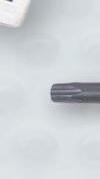















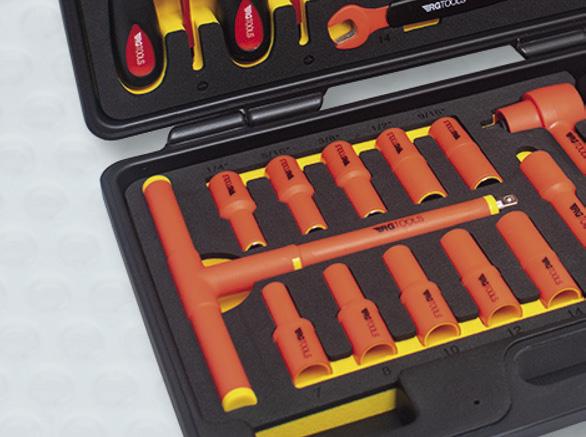






























TO
OUR
TH ANNIVERSARY CELEBRATIONS NOW AND RECEIVE REWARD POINTS ON YOUR TRP PURCHASES UNTIL 31ST DECEMBER 2024 AND ALSO TAKE PART IN OUR QUARTERLY PROMOTIONS
The TRP range of All Makes Truck, Trailer and Light Commercial Vehicle parts is the culmination of over 30 years dedication to building the most comprehensive after sales support for fleets across the globe.
Since its inception in 1994, the TRP range has continued to develop and expand to over 100,000 parts, backed by the award-winning PACCAR Leyland Parts Distribution Centre, and is now the UK and Ireland’s largest range of commercial vehicle parts.
Whatever your fleet size of trucks, trailers and vans, TRP is the go-to after-sales supplier for parts, lubricants and workshop consumables, helping you maintain your vehicles. We can also help ensure you run safely and efficiently by supplying you with quality parts from all the leading HGV and LCV parts manufacturers across Europe, many of which supply OE parts to the worlds’

The TRP parts range is available from over 140 locations with most dealers offering multiple daily deliveries.
With impressive stock levels, most orders can be delivered either same day or next day, helping to keep your workshops on the go and ensure trucks, trailers and vans are back on the road as quickly as possible. The network has many experienced parts staff who help identify the right part for your trucks, trailers and vans by using state of the art parts identification systems.
Moreover, using webshop, you can check parts availability with your local dealer and order parts 24/7, ensuring you get
what you need as soon as possible.

£25 e GIFTCARD FILL ANY LINE AND CLAIM A COMPLETE
e























largest manufacturers.





All TRP 30 members receive reward points on all their purchases of TRP products until 31st December 2024.
However, from 1st July until 30th September, members of TRP 30 can also play TRP Bingo to claim eGift Cards when they purchase selected products as featured overleaf!
We’ll keep track of what each member buys throughout the quarter, and as purchases of featured products meet the criteria for each square on our Bingo card, we’ll tick the square off online, so when you visit the TRP 30 members portal it’s easy to see how close you are to claiming another eGift Card!




By Richard Simpson, industry pundit
By the time you read this, you will know something I don’t yet: the result of the 2024 General Election.
Transport issues haven’t really come to prominence at all during the campaign: even the vast sums of money ‘spaffed’ (as a former PM would put it) on the failed HS2 railway have passed pretty much unremarked upon. There’s the usual stuff about net zero, where the destination is agreed by all three parties and only the route and timetable varies, and that’s pretty much it.
The Liberal-Democrats have, however, included a one-liner about road freight: their intention is to get it off the road and onto the railways. This is a longheld desire of the political centre and left, yet it makes increasingly less sense as time goes on.
We once had a rail network that would have made this at least partly possible. I recall as a tiny child riding along in my Dad’s Ford Thames van as we went to the local station in Blandford to pick various items up ‘off the train’. I think those items sometimes included my grandma, but to be honest all I can really remember is the noise, smoke and steam of the ancient locomotives of the Somerset & Dorset line (known locally as the Slow and Dirty).
All long gone now, of course. The station is now a housing estate and what is left of the line after most of the bridges were blown up is a cycleway. And it’s the same story pretty much everywhere in the country. The brutal fact is that 98 per cent of the nation’s freight is carried by road because roads go everywhere and rail goes nowhere, and that really isn’t going to change.
And nor should it. There used to be a theoretical environmental case for putting freight on the rails: centred largely on the resultant reduction in carbon emissions, but ignoring the increased costs and impacts of transhipment as most freight journeys would still begin and end with a road element. Indeed, back in the days when rail did play a significant role in freight, the biggest operators of commercial freight vehicles were the railways: they even had their own unique vehicle in the form of the Scammell Scarab.
But that case is getting weaker by the day. Every electric truck that is put onto British roads swings the environmental argument further away from financially ruinous railway projects like HS2. We are also seeing electric coaches appear on express services: the recent introduction of
electric coaches on a route running between Newport, Bristol and London, beats the competitor rail services in terms of carbon footprint because they still use diesel power.
And as for rail freight…this time last year DB Cargo UK withdrew its Class 90 electric locomotives and replaced them with diesel, because the cost of running them was unviable. So much for the green credentials of rail.
Using rail increases transport distances and times overall. You can put an imported container on a train at Felixstowe, and send it to Birmingham, then transfer it onto a truck and take it to a distribution centre in Leicestershire by truck, or you can just put it on a (zeroemissions) truck in Felixstowe and drive it straight to where it’s needed. So, the case for supporting investment in rail looks weaker by the day, while the smart money should now be going on the electrification of road freight, including investment in improved roads to carry it.
But, having been drip-fed decadesworth of rail good, road bad by the political establishment, it’s questionable whether the British public is ready yet to grasp this simple and convenient truth.

Mandy Wannerton is the DAF Press & Demonstration Driver


Here at DAF’s Driver Academy we believe that training is more than simply imparting information to the masses. We understand the many differences in drivers’ learning styles, and when we deliver training, we tailor it to suit each company’s operation and the individuals involved.
It doesn’t matter if it’s a smallersized company or a larger fleet, we believe that training should not only be educational but relevant and meaningful to all, but that’s where we hit our biggest obstacle; there just aren’t enough days in the year to spend time with every one of our customers’ drivers who are interested in learning, and ultimately having an easier time behind the wheel. To help address this we have now developed a new training
programme for company drivertrainers, so that they can use not only our product knowledge but also our training methodology when helping the drivers in their fleets get the best out of their DAF trucks.
This is more than simply a train-thetrainer programme, this is a much more in-depth DAF company trainer course which has been based on DAF’s successful Dealer Driver-Trainer programme.
The programme starts at DAF in Haddenham and it is here that the foundations and standard in becoming a recognised DAF company trainer begins, before undertaking an assessment to earn your wings. Training initially takes place in the
classroom and on static vehicles before taking this newfound knowledge into the cab and out on the road. This isn’t your ordinary attendance course, it is demanding with stringent standards to be achieved…nor is it about teaching you to suck eggs. What it does do is take existing skills to a new and exciting level and the programme continues to support long after the initial training has been completed.
So, to any trainers reading this who are interested or would simply like to know more about this exclusive programme, why not show this article to your boss? It would be good to see you!
Be safe!

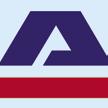





The prize in this edition is a DAF XG+ Ride on Truck Suitable for age 1.5 to 4 years – max. 30 kg, for one lucky winner. The truck will be delivered unassembled in a carton with a manual inside. To be assembled by an adult. No tools included. Simply spot and mark the four diff erences on the images above. Once completed, either cut out or photocopy and post to DAF Driver magazine, 4th Floor, 19 Capesthorne Drive, Eaves Green, Chorley, Lancashire, PR7 3QQ Closing date: Friday 9th August
DAF now has Dealer Driver-Trainers based across the country to help hand over new and used vehicles and we thought it would be good to get to know some of them a little bit better! In this edition we talk to Sonia Macken who is a DAF Dealer Driver-Trainer at Greenhous DAF covering the West Midlands and Shropshire.
Q:
When did you first join Greenhous DAF and what was your first job there?
A: I joined Greenhous DAF last year, in my current role as a Driver-Trainer. I had no experience in this, and I’ve had a lot to learn, but it’s been perfect for some career development. A branch-off from driving but also using my experience.
Q: What did you want to be when you were at school?
A: I never really knew exactly what I wanted to be at school and I’ve had quite a varied career. Vehicle body repair, van driving, bus driving and management, and then HGV driving. I seem to love all forms of transport and I’d still like to be a train driver!
Q: When did you take your HGV licence?
A: I took my HGV in the days of Class 2 (C) and then Class 1 (C+E). I’m glad I did it that way, but as soon as I had passed my Class 2 in 2017 I wanted to do my Class 1 and so I passed a year later in 2018. I’ve been lucky to have had some good jobs with companies who train and develop drivers and expect high standards in relation to driving law.
Q: What do enjoy most about your role?
A: As I’m relatively new to this, I’ve enjoyed how much I’ve learned and how much there is to learn about these vehicles, as each one is different. Different equipment for different customer applications. I am genuinely interested in our customers’ businesses and how they then go on to apply these vehicles in their day-to-day operation. It’s really nice to be handing over a new vehicle to people, explaining the features and knowing how pleased they are.
Q: Do you have a top tip for a driver getting his or her new DAF?
A: Taking advantage of driver handovers, would be my top tip. I personally would like to promote more fuel-efficient driving. I can understand that it’s not always possible in the real world of deliveries and collections, but, as and where it’s possible, using the features of the truck like cruise control and the engine brake can become more of a habit and much more fuel efficient. Give yourself an aim!
Q: What car do you currently drive and if money was no object what would you have?
A: I’m so lucky to be cruising around in an Audi Q4 for my daily. Fully electric and a whole new driving style. But I have a weekend fun bus, my all time favourite vehicle, my Ford Tourneo Custom Sport. It’s like a minibus and I use it as a camper van, and I also transported some ladders on the roof recently when I was a works foreman for the weekend! If money was no object, I’d be away in a motorhome, travelling the shores and cities.
Q: What other responsibilities do you have within your role at Greenhous DAF?
A: Day-to-day, I help out with all sorts of vehicle movements. PDI, bodybuilders, deliveries. I also help with setting up vehicle movements for our team of drivers, delivery packs, fuel and park, so they are ready to go for the next day. I’m not much good at making tea, so I don’t do much of that, but I’m always at hand should a driver need my help with anything once they’re in their new truck.
Q: If you weren’t doing this, what would your ideal job be?
A: This job is ideal! Monday to Friday, company car! And I get to meet people and talk about trucks! Im living the dream!





Sonia and her boyfriend Mark consider themselves very lucky to live a simple, comfortable life with their super-cute cat whilst sharing a love for motorsport and travelling. In fact, at the time of writing, they were due to go off on their holidays to the Algarve. Sonia enjoys getting away in the van as much as she can and has recently been on a trip to Scotland in convoy with a friend. They did some off-grid camping, visited The Kelpies and the amazing Falkirk Wheel and then went paddleboarding on Ullswater. A brilliant trip and something they plan to do more of. The van is quite a project and Sonia is looking forward to picking people’s brains about the electrics that she plans to install!









Many organisations have been on the hunt for an alternative fuel which has the properties of diesel but without the huge cost to the environment.
And it’s Hydrotreated Vegetable Oil (HVO) that has emerged as one of the most comprehensive alternatives. Derived from used vegetable oil, a 100% renewable feedstock. It is a cleaner, drop-in alternative to diesel with significantly lower life-cycle greenhouse gas emissions.
Certas Energy is leading the way, being the first to bring HVO to HGV refuelling stations.

Tim Shepherd, Head of Fuel Cards at Certas Energy, explains: “Everyone has to play their part in the journey to Net Zero but it can be hard to know where to start. HVO is a practical solution that allows businesses to cut their emissions without changing any infrastructure.”
Tim adds: “We trialled HVO in our own fleet and saved 6,422 tonnes of CO2e over two years. It helped us achieve our 2025 Scope 1 emissions target three years early.”
As a relatively new product, fleet managers can (understandably) be nervous about making the change to HVO. But, it is more like diesel than you would think, both chemically and physically, making it suitable for use in engines designed for standard diesel.

Importantly, HVO is less harmful to the environment. It burns more efficiently and produces fewer particulates than traditional diesel. It is 100% biodegradable, and poses less of a risk in the event of a leak or spill.
“Certas Energy is the largest distributor of fuels and lubricants in the UK so we are in a good position to help fleet operators wherever they are in the country.”
One of the biggest benefits of HVO is that it provides immediate greenhouse gas savings compared to standard diesel. As much as 90% over the entire HVO life-cycle.

Certas Energy is a Renewable Fuel Supplier under the Renewable Fuels Assurance Scheme so customers are assured that its HVO is made from verified and sustainable sources that meet the highest auditable standards. This is important when fleet operators are under pressure from shareholders and customers to show how they’re cutting emissions.

Certas Energy has 27 HGV refuelling sites, 13 of which have HVO, and this is only increasing. They’ve been specially developed to allow ease and speed of filling and movement for coaches, LCVs, and HGVs. Certas Energy was also the first fuel company to offer HVO to HGV fuel card users at the pump.


“Keep your eye out for our upcoming podcast where we’ll be speaking with DAF about the supply and use of HVO in HGVs. We’ll also be tackling common myths about the fuel,” finished Tim.





































































